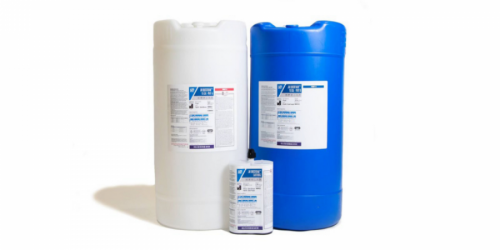Q&A Forums
Pay Back Calculations Post New Topic | Post Reply
| Author | Comments |
|---|---|
|
Tony Di Bratto
Posted: Oct 29, 2007 11:32 AM
|
Pay Back Calculations
Does anyone have any good tools for helping to sell the value of Spray Foam and help buyers understand the difference in initial costs of SPF versus say fiberglass batt installation as compared to savings in energy costs over the years?Thx |
|
Posted: Oct 29, 2007 06:34 PM
|
First I would suggest that you mosey over to www.energywisestructures.com spend a few minutes there and then get on the phone to Richard. Second really educate yourself to where any question thrown at you is second nature to address. Third......work hard, it pays off in the long run. Kenneth |
|
Tony Di Bratto
Posted: Oct 30, 2007 11:53 AM
|
Thanks. Please excuse my ignorance but I am new to this and looking to establish a spray foam business so I am trying to learn what is available. I went to the site and took a look around and I watched the video. All very good and drives the point home about right-sizing the HVAC equipment when using spray foam. However I did not see any real good information on how to calaculate pay back on a case by case basis. Did I miss it? Who is Richard? I have started to search the net for some good HVAC sizing tools to see what is out there and so far I have come across a few. Ones I looked at did not appear to accomodate spray foam or air transfer rates assumed so that I could see the difference in sizings between a conventional fiberglass vs spray foam application. Anyone out there have some good suggestions? Thx |
|
Dave Strnad
Posted: Oct 30, 2007 05:24 PM
|
Good luck!! I have been looking for two years and still haven't really found anything good. I am not aware of any thing that will produce concrete numbers. If you search on here or ask some of the other guys they know how to figure heat loss, however this is just based on R-value so the cheapest R-value makes the most since when using that type of calculation. I am in the process of trying to figure this out as well so far it seems there are to many varibles that will greatly affect the payback time. In my attemps the same house can have a 3 year payback or 35 year payback all depending on what numbers you use and where. Also if someone does have this figured out as an exact science it would be an impressive marketing tool and it would probally be hard to convince them to share. |
|
Richard Russell
Posted: Oct 31, 2007 08:12 AM
|
If you are selling foam against a fiberglass batt competition, you will have a hard time finding a good calculation method for real heat losses in the FG insulated house. That is the big issue. With FG, you won't get anywhere near the R value claimed on the packaging when you need it most (cold weather). With foam, you can do meaningful calcs., because it eliminates the big problems you face when trying to do the calc for FG. In the FG insulated house, you have a potentially huge heat loss due to air infiltration (worst in cold, windy weather) if the house wrap is not done very carefully (typically not). Even if the housewrap is done well, so that air infiltration is minimized, you still have the issue of temperature-induced air movement within the FG batt itself in very cold weather (when you need the insulation the most). A 70 degree (F) temperature difference results in air that is almost 15% heavier at the sheathing outside than at the drywall inside. The colder air sinks, and the warmer air rises. FG won't stop this convective movement within the batt itself. It's like little conveyor belts, carrying heat from inside to outside. Just how bad this effect is depends on temperature, but it can cut the effective R value in half vs the advertised R of the FG batt. This was shown for an attic assembly in a test done (early 90s) at the Oak Ridge National Laboratory "Large Scale Climate Facility," where they actually measured effective R for an attic assembly as temperature above it was reduced gradually to -18 F. The density difference issue is worse in a vertical wall, because the temperature difference doesn't have to get to a certain threshold for the instability to set up circulation patterns. Your selling point with foam is that it addresses both shortcomings of FG. It seals against air infiltration and it eliminates any possibility of convective air movement within the insulation due to air density differences. All you can hope to do to quantify this is to make some worst case assumptions about how bad the FG can be in winter with respect to air leakage and R degradation and calculate the savings in heat loss if foam is used. Edit: OK, I thought I'd mention a spreadsheet I put together to calculate the effect of direct conduction of heat through wood studs on the effective R of the whole wall, studs and insulation. I posted this on Breaktime a couple of months back: http://forums.taunton.com/tp-breaktime/messages/?msg=90303.0 The first table in the thread is for R of wood at 1.0/inch. At the end of the thread I posted a version of the table for R of wood at 1.25/inch. |
|
Posted: Oct 31, 2007 01:46 PM
|
What I would tell the homeowner is if it cost you $20 more per month in your construction loan, and you save $60 per month in utilities, then you take that $40 per month towards your payback. Inform them that these numbers are very low and your payback is very likely to be higher. |
|
Tony Di Bratto
Posted: Oct 31, 2007 05:55 PM
|
If it costs a homeowner $10K to upgrade to foam. Over 25 years and 6% interest, monthly payments would be about $65 per month. So the savings need to be at leat $65. I like the logic you used but how do we convince them of the min $65 savings? I started to put together a spreadsheet showing Heat Gain and Losses and takes into consideration air infiltration as well. I have it built and now I want to input the numbers for my home to see the effect on BTU/H. Will be interesting to see what the size of the HVAC differences would be with my home. I have done a bunch of research on the net to build this model and I think I got it but one question I do have is whether or not we should include the basement floor (concrete below grade) in the calcs or not? It would definitely be part of the envelope but what R value would we attribute to 3" concrete over gravel and soil? Or do we just leave it out? Next observation I make is that if we are comparing a home without foam to a home with foam, then in theory the R value of the wall would be the same for both homes. For example a home with R20 Fiberglass if sprayed with foam CC would get 20/6 = ~3.5 inches of foam. This cost might be 3 times that of fiberglass. If the R values are the same then the only deciding factor on BTU/H is the infiltration Average Changes per Hour (ACH). So one can argue that the volume of Air within a home will leak through the envelope at a greater pace without foam. So we should be able to simplify the arguement purely based on the air leakage and the effect it has on BTU/H in the delta sizing of the HVAC equipment. For example. A home with 36,000 Cubic Feet of Air volume leaks in a typical home at a rate of .43 per hour translates to 14,932 BTU/H. If we assume spray foam wil give us 0.19 per hour we get 6,598 BTU/H. This suggests our furnace can be reduced by 8,334 BTU/H or 0.7 Tons. So in this example you can tell the customer that whatever their furnace has been sized for, it should be capable to reduce it by another 0.5 Tons and still be safe. The same math can be done for the AC. |
|
David Lenaker
Posted: Oct 31, 2007 11:13 PM
|
Go to www.permax.com and look at there baby feet brochure. It shows a true life house with energy savings and the payback on it. David |
|
Rob Granger
Posted: Nov 01, 2007 08:42 PM
|
I could not find the baby feet brochure. How do I get to it. THanks |
|
Tony Di Bratto
Posted: Nov 02, 2007 08:27 AM
|
I could not find the brochure either. |
|
quentin
Posted: Nov 05, 2007 10:16 PM
|
Here is a direct link to it and theinfo is on the last page. http://www.henry.com/fileadmin/pdf/PERMAX%20BROCHURE.pdf It is on the right side of the home page labeled as Permax Insulation Brochure Homeowner. There is also a Calculate Savings Now link. http://www.henry.com/index.php?id=429 |
|
Gerry Wagoner
Posted: Nov 11, 2007 08:54 AM
|
Try WUFI. |





























